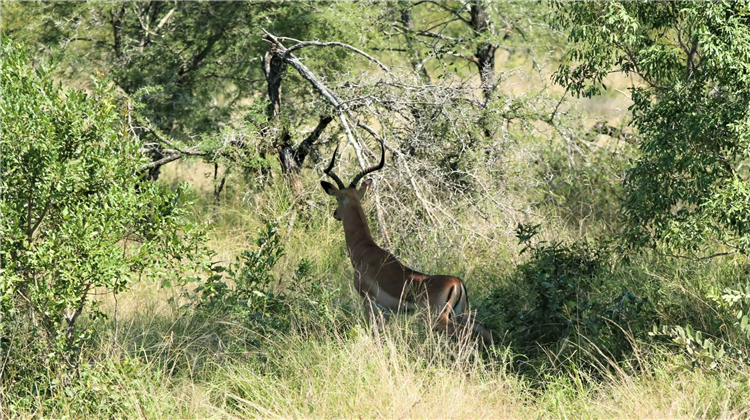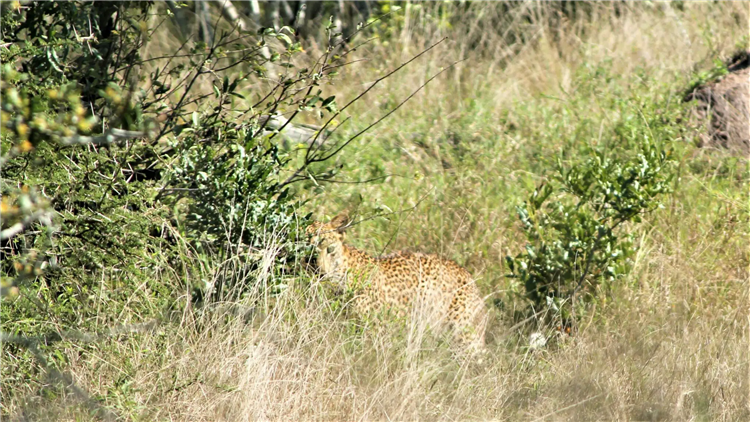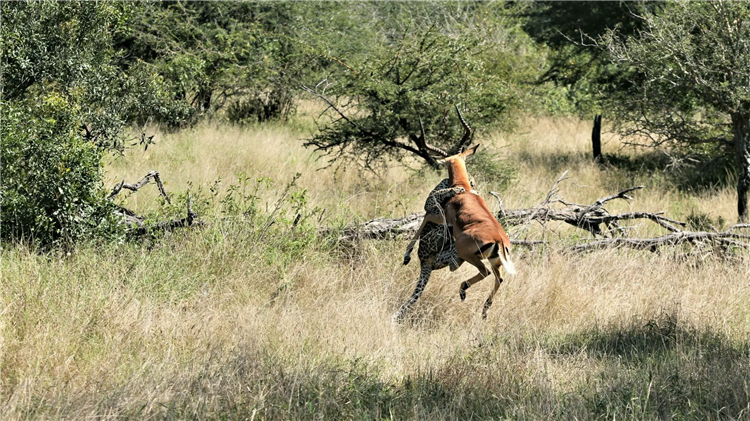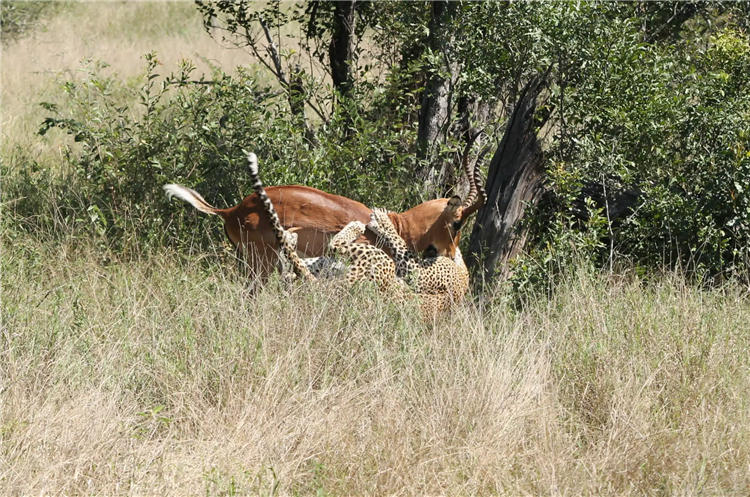This was the moment an incredible battle between a leopard and impala unraveled when the leopard gave its all to make a meal out of an impala! This unbelievable sighting happened on the H12, near Skukuza in the Kruger National Park.
Leopards are well known for their camouflage and agility when it comes to their hunting methods in the wild. But this impala really set quite the challenge for this leopard. 58-year-old wildlife enthusiast, Deon van Loggerenberg has been an avid visitor to Kruger for nearly 30 years and says he has never experienced anything like this.

Deon tells LatestSightings.com the story: “We were travelling from Satara to Skukuza and approached the H12, when we saw a few vehicles, awaiting a leopard. I turned my vehicle around and sat and waited for a while. I wanted to leave as there were quite a few impalas around as well as warthogs. One of the impala rams let out a warning and slightly hunched and looked into the bush.”
“I had my camera ready because I thought that the 1st ram had obviously sensed danger, I was quite right. The next moment the leopard leaped into the air and I was pressing the shutter button like crazy. As you can see, the leopard was hanging below the ram trying to get a proper grip.”

“The impala, big and strong, probably ran with the leopard for 10 meters or so. The leopard took hold of it, they moved away slightly, and behind a bush, we could see the ram go down. A few minutes later it was all over”.
This was the moment an incredible battle between a leopard and impala unraveled when the leopard gave its all to make a meal out of an impala!
We take the thousands of wildlife sightings shared by our community in Kruger and Pilanesberg and pin them onto an interactive map. The maps will help you plan the best routes in the parks based on hard data! Our eGuide could help you spot animals in the parks!

“By the end, we could not really see them anymore…When I saw the impala’s tail wag I knew it was over and the ram had died. The leopard looked up and around, and dragged the impala away and out of sight.”
Deon’s advice to any wildlife enthusiast is to “be patient, get in a good position, and ALSO have a video camera ready. This would have been awesome on video as well.”
When she saw her baby being attacked by a leopard, the mother wildebeest was not afraid of danger, quickly rushed to use her horns to knock the predator to save her baby.
Impressive moment of the power of motherly love captured at MalaMala Nature Reserve (South Africa). The clip shows the moment a leopard stalks and silently approaches the mother and baby blue wildebeest.

Realizing the opportunity to come, leopards immediately rushed out, aiming at the wildebeest to attack. Panicked by the sudden appearance of the leopard, the mother and daughter immediately ran away, but the baby antelope was quickly captured by the leopard.
Realizing that her baby was attacked by a leopard, the mother wildebeest returned, using her horns to ram the leopard to rescue her baby. Being attacked by surprise, the leopard had to retreat, accepting to give up the hunt.

According to animal experts, leopards are living and independent predators, so they always find ways to avoid unnecessary conflicts, because if injured in battle, leopards can will find it difficult to continue hunting and cannot survive in the natural world. That’s why in the above case the leopard quickly retreated, instead of continuing to fight the mother wildebeest.
The blue wildebeest is the largest wildebeest. At maturity, males can weigh about 250kg, while females weigh about 180kg. Blue wildebeest can live about 20 years.

Wildebeest is a species with a very high herd instinct, in which the young will be protected by the mother and the adults in the herd. Young wildebeest will live with their mother for about 8 months to a year, before separating to join a new herd or continue to live with the herd, but without the mother’s protection as before.
Despite possessing size, weight and strength superior to leopards, wildebeest is still one of leopard’s favorite prey targets.
The African leopard (also known as the African leopard) is one of the five big cats (tiger, lion, jaguar, leopard and cheetah). Adult males can reach a weight of 60 to 91 kg, while adult females can reach a weight of 45 to 60 kg.

Leopards often target young wildebeest to attack, in case of injury when attacking adult antelopes. However, in many cases, leopards are also willing to take risks to attack adult wildebeest, because the result will be a much more abundant meal than the wildebeest. young.
Not possessing the same speed as the cheetah, the leopard is still a dangerous and fearsome predator thanks to its ability to stalk silently to approach its prey. The diet of the African leopard can include rodents, antelope, deer, birds, primates…
Thanks to its ingenious stalking and hunting abilities, leopards are considered to be the most successful feline animals in the natural world.
